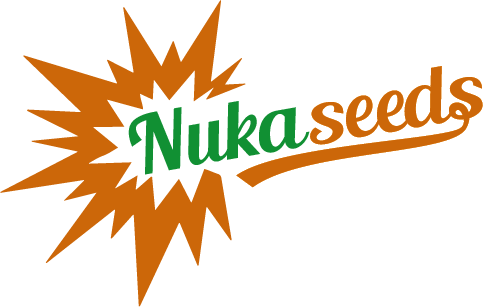English
Potassium deficiency in cannabis
Potassium, one of the three macronutrients most important for plant growth, is essential during the flowering phase of cannabis and flowers development. If you are seeing strange discolouration and stunted growth in your cannabis garden, it could be due to a potassium deficiency. Without help, a potassium deficiency can quickly ruin months of hard work in your garden.
What functions does potassium have for the cannabis plant?
A key function of potassium in cannabis plants is water transport throughout the vascular system. Potassium regulates water respiration, photosynthesis, stem and branch strength and disease resistance. It also influences root health and provides insulation against low temperatures. As a result, this nutrient plays a significant role in the overall health of the plant, and potassium deficiency can cause a breakdown of many systems and processes throughout the plant. Additionally, cannabis plants can absorb too much potassium – a problem known as toxicity. If a plant suffers from potassium toxicity, it will have problems absorbing other nutrients such as calcium, zinc and iron.
Potassium deficiency – implications
Untreated potassium deficiency can kill the plant. Plants will start to dry out because it will become impossible for them to move water. Additionally, potassium-deficient cannabis plants will not be able to carry out photosynthesis, so they will have trouble absorbing light and converting it into the energy needed for growth and flowers development. Since the organelles that carry out photosynthesis, known as chloroplasts, give plants their green colour, a potassium deficiency will cause plants to turn morbidly yellow and then deathly brown.
Signs and symptoms of a potassium deficiency
Potassium deficiency in cannabis plants can usually be detected in two places. Firstly, evidence can be found on the leaves of the plant. However, evidence can also be found in other places in the plant’s body. Let’s find out the details.
In the leaves
If there is a potassium deficiency in the garden, it can be noticed first on the leaves of the plants. First, the tips and edges of the leaves turn yellow and then brown. Then, dead brown spots begin to appear on the surface of the leaves. Unlike most other deficiencies, the veins on the leaves will remain green – one sure way to detect advanced potassium deficiency in cannabis.
In other parts of the plant – stems and flowers
Potassium deficiency can quickly become apparent throughout the plant. One of the most common signs of potassium deficiency that can be seen on plant structures other than leaves is uneven stretching of stems and stalks. However, stretching should not be confused with growth. Plant structures such as buds and leaves will appear stunted and uneven. You may also notice red streaks appearing along plant stems.

Other problems often confused with potassium deficiency
Before you start normalising potassium levels, you need to make sure you have correctly identified the problem. Firstly, it is easy to confuse nutrient burn with potassium deficiency. In both cases, it is the yellowing of the tips of individual fan-shaped leaves. In both cases, the leaf tips also curl upwards. In the case of nutrient burn, however, necrotic brown and yellow spots do not develop inside the leaves. On the other hand, mottling also occurs in calcium deficiency.
However, yellowing and curling of the leaf tips does not occur in calcium-deficient plants.
Potassium deficiency – how to resolve it
As with most nutrient problems, growers have found many solutions to correct potassium deficiencies in plants. In general, most potassium deficiencies are caused by one of two reasons: pH problems and poor nutrient quality. Fortunately, both of these problems can be easily solved if only quick action is taken.
Adjust pH
If the pH of your substrate is not in the right range, your plants will not be able to take up the nutrients they need. Potassium is no exception. The ideal pH for plants to take up potassium in soil-based crops is between 6.0 and 7.0. Hydroponic systems and other media, such as coco coir, require a pH between 5.5 and 6.5. You can reset the pH of your media by flushing your plants with pH-appropriate water.
Changing the nutrient mix
Did you know that if a plant has too much of one nutrient, it can prevent it from absorbing another? For example, too much calcium or nitrogen in the mix can inhibit the absorption of potassium. This is called ‘blocking’. As a result, if you observe a potassium deficiency, then perhaps other nutrients are blocking potassium uptake. Flush your plants and adjust your nutrient regime accordingly.
If you decide to grow your own cannabis plants, always buy good quality, fresh cannabis seeds. You can check out seeds from Nukaseeds.
Published by Blood
21/02/2023choose and buy cannabis seeds from our offer
our pleasure



























